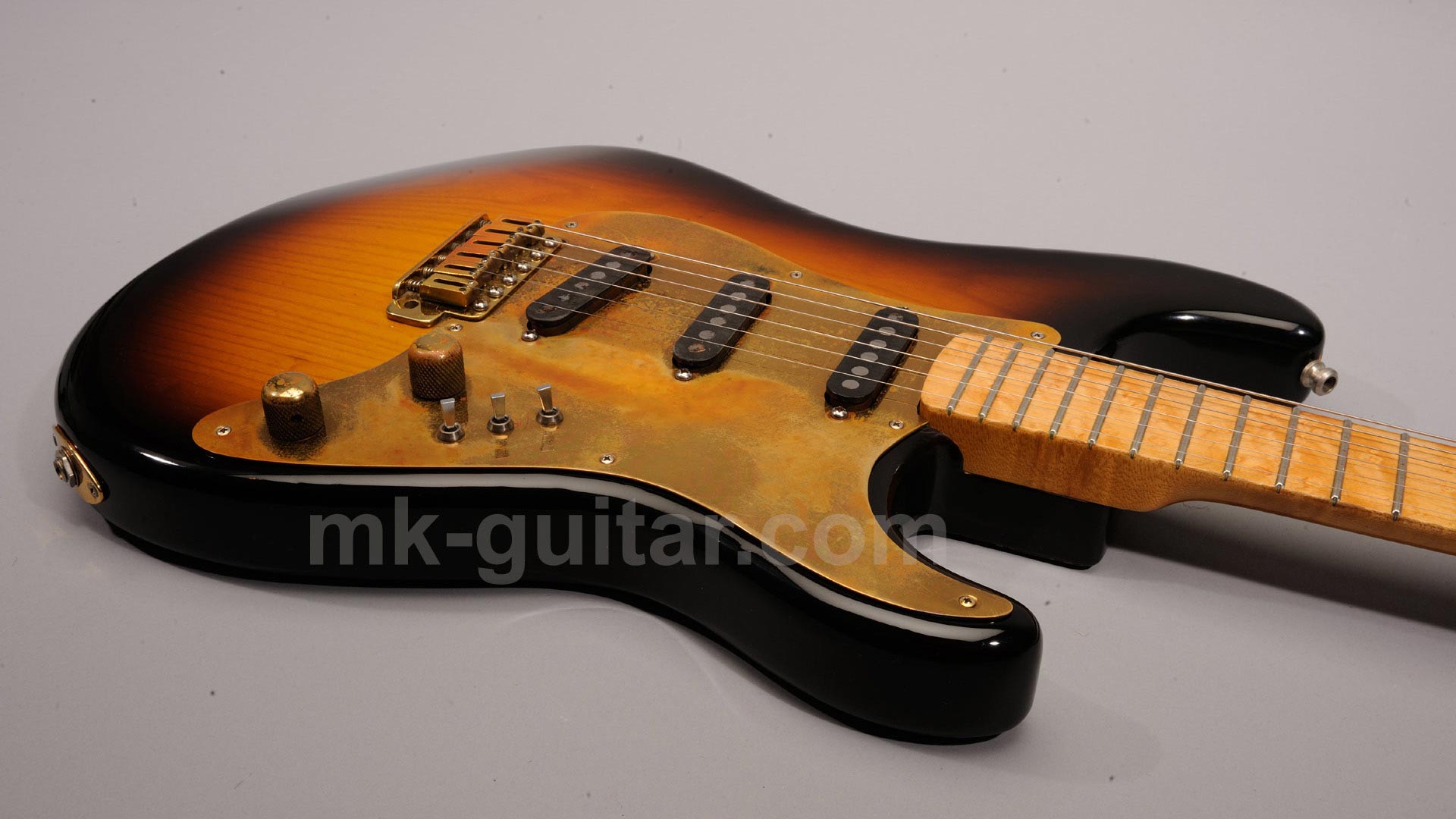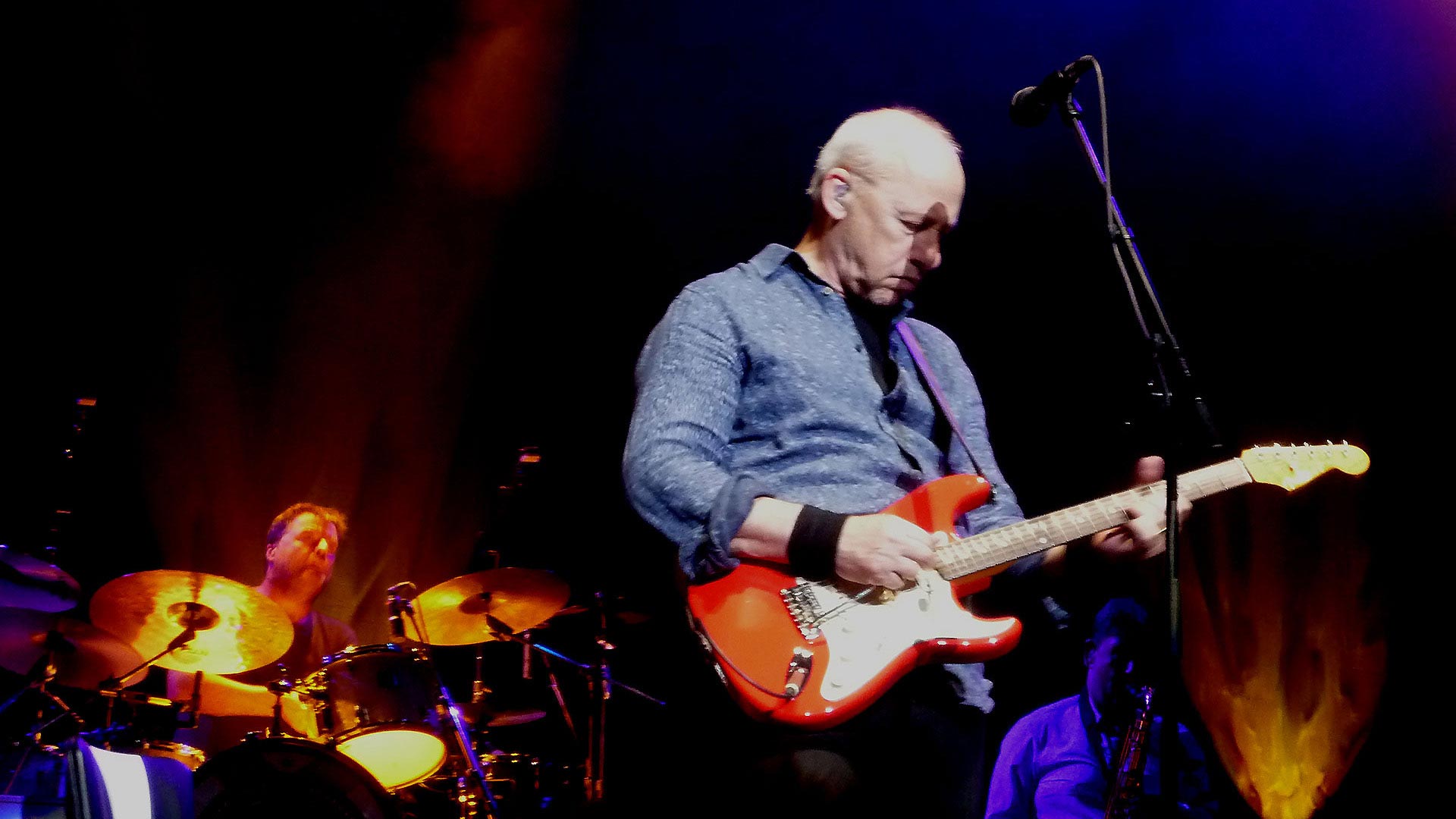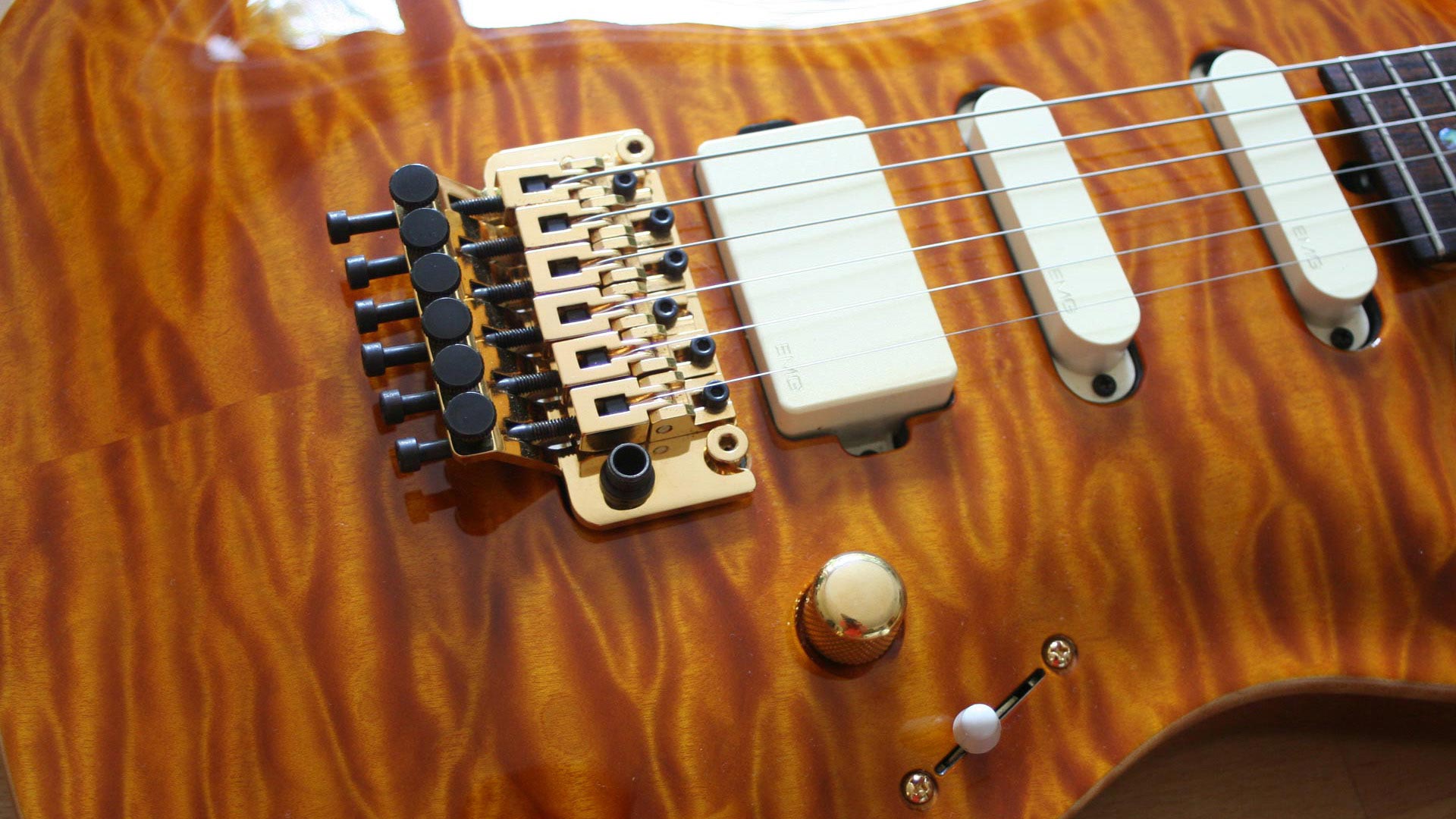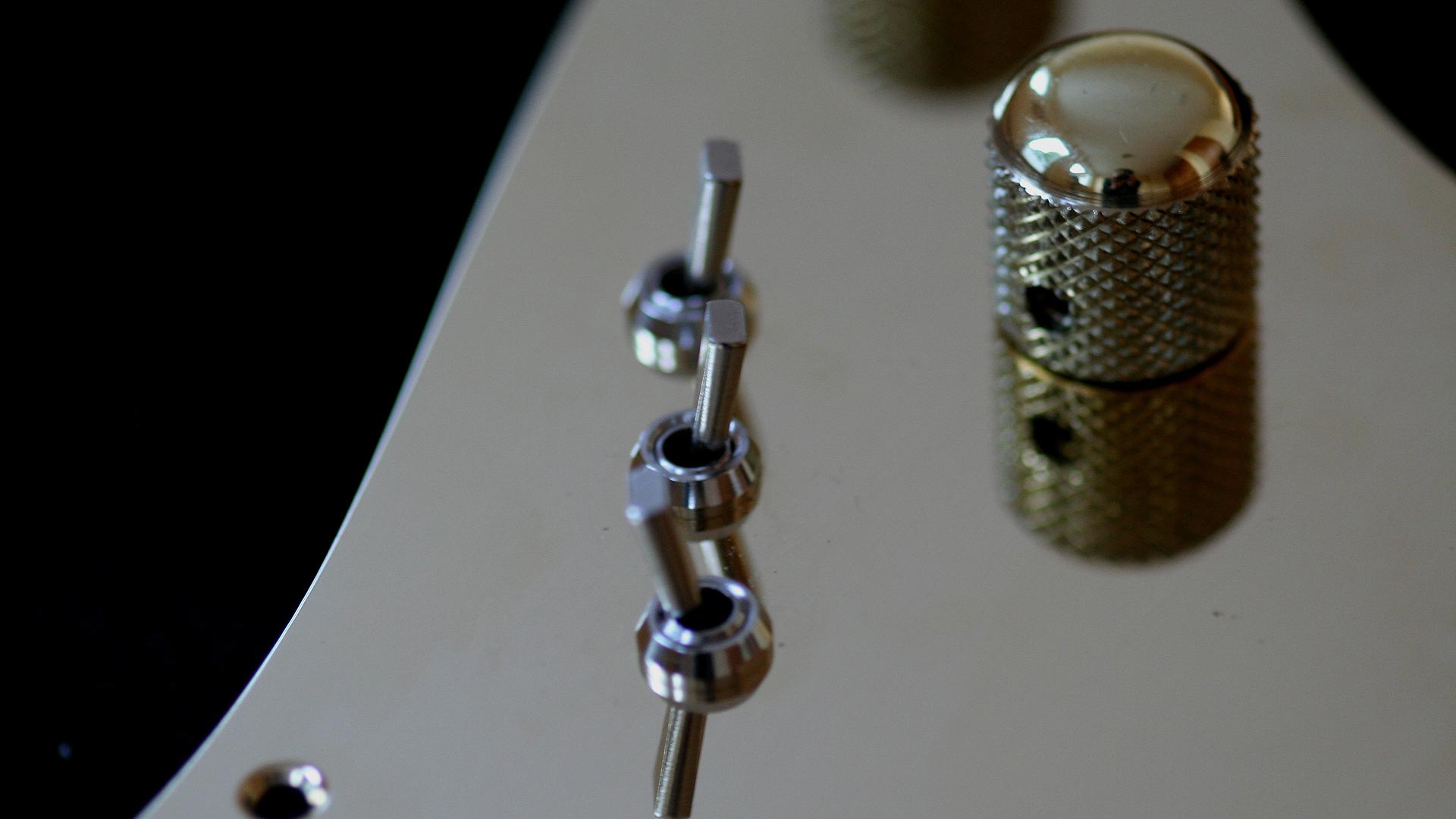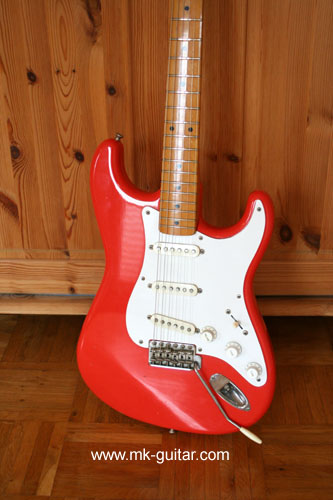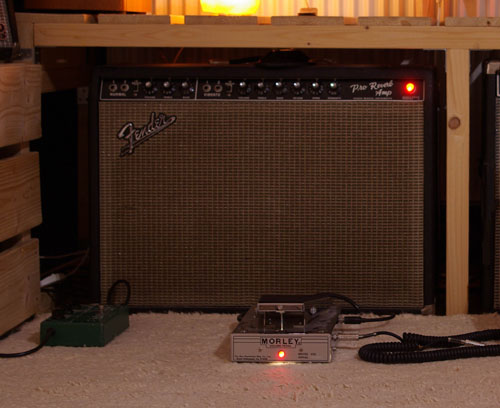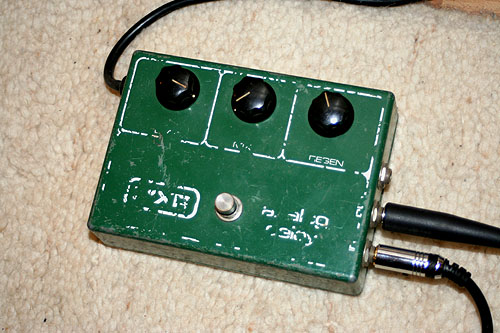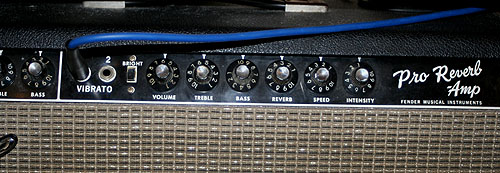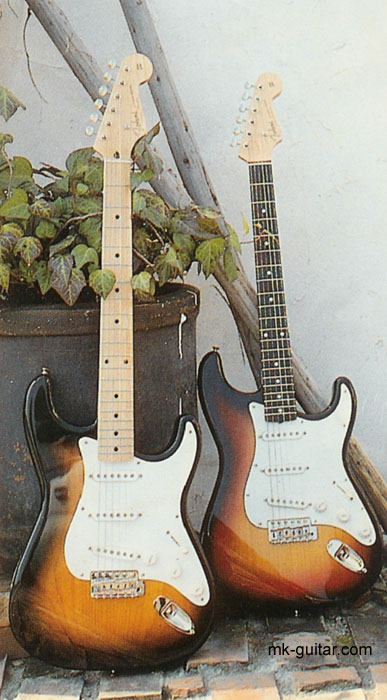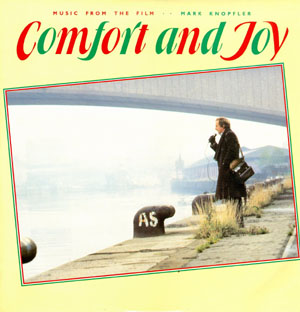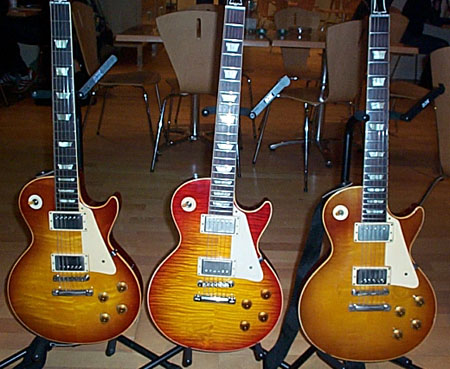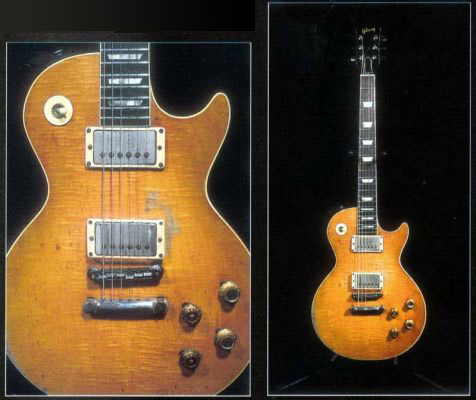The DiMarzio FS-1 pick-up of Mark Knopfler’s red Stratocaster
According to an interview with Guitar Player magazin from 1979, Mark Knopfler played a DiMarzio pick-up in one of his two red Fender Stratocasters that he played around the time of Dire Straits’ first two albums:
On one there’s a DiMarzio pickup for the bass, and I like it because it just seems to give a fatter, louder sound, with more clout than the standard pickup Fender uses.
DiMarzio has been producing replacement pick-ups for Fender and Gibson guitars since the early 70ies. Back then, a lot of players had the wish for hotter pick-ups to get more distortion from their amps – remember that high-gain amps, tube pre-amps and the like were a development that started in the 80ies. So most DiMarzio pick-ups were simply hotter replacements for the standard pick-ups. Hotter normally means the pick-up is wound with more coils. This does not only lead to more output but also to a fatter tone with more midrange and less treble. Consequently one of DiMarzio’s most popular models was the Fat Strat, or in short FS-1 (today also called model DP-110). There is no direct evidence that it was this model in Mark Knopfler’s Strat, however, the DiMarzio product line was not big, and the only other Strat pick-up they offered at that time was the SDS-1, which had adjustable pole pieces – something you would see on pictures, and Knopfler’s Strat did not have these.


The FS-1 had a DC (direct current) resistance of 13.35 kOhms (a stock Fender vintage Strat pick-up has about 6 kOhms). The DC resistance results from the length (and the dimensions) of the coil wire – if it is the same wire you need more than twice as many coils as on the vintage Strat pick-up to get this value. The pole pieces were made of alnico 5, just like stock Fender pick-ups. The higher resistance results in a lower frequency peak, so the pick-up has less treble and instead a boost in the upper midrange – as the name suggest it sounds fat. The pole pieces were staggered (different length) but not as much as on Fender pick-ups – mainly the magnets for the d and g strings were a bit higher (see picture).
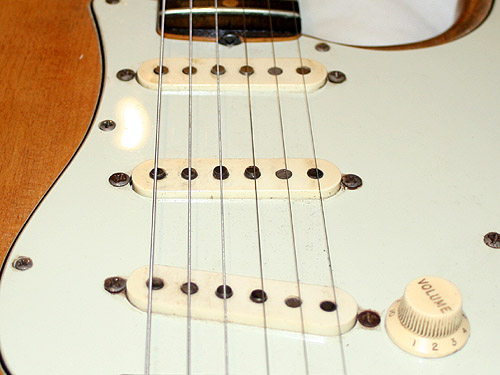
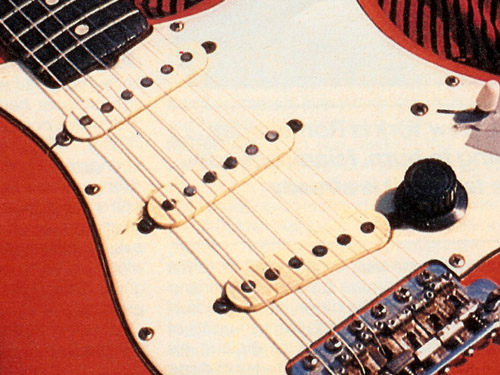
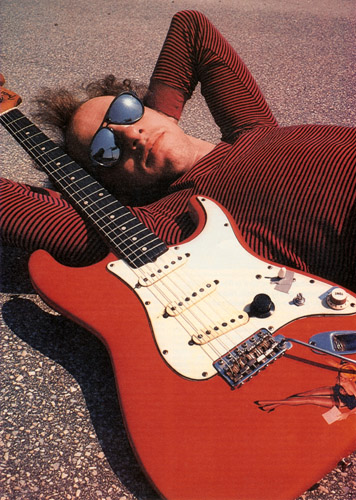
Most players installed hotter pick-ups into the bridge position because the stock Fender pick-up is in some situations too weak to overdrive the amp, and it often sounds too crisp. Nevertheless, Knopfler played it in the neck position. This was in a way similar to some Telecaster players’ approach who like to play a normal bridge pick-up for that twang and a humbucker in the neck position for warmer jazz or blues sounds.
The guitar with the DiMarzio was originally Knopfler’s Fender Stratocaster S-No. 68354 – the one with the rosewood fingerboard. Of course noone knows for sure but I suspect that it was already in when he got the guitar which was only shortly before Dire Straits started. Note however that for some periods Knopfler used to swap the complete pickguards between his two red Fenders. It seems he favoured the one of the rosewood Strat and often put it into his maple-neck Strat (which was the guitar he mainly played on stage in 1978 – 1979). To my knowledge today the DiMarzio is not in this guitar anymore.
There are many old live recordings on which you can hear hear the fatter sound as soon as he switches to the neck position. For some reason Knopfler did not play the neck pick-up often on the first two albums – much less than he did on stage. The only song with the neck pick-up seems to be Single Handed Sailor from Communique, and in fact this seems to be the FS-1.
On the following video I am demonstrating the sound difference between the DiMarzio FS-1 and a normal Fender pick-up. Note that the guitar used here with the FS-1 has a rosewood fingerboard and for this reason sounds darker anyway than the other with a maple neck, but the difference between the pick-ups is still easy to spot. You will find some licks from Once Upon a Time in the West and from Single Handed Sailor on this video.
Finally, here is a video that shows Mark Knopfler on stage in 1978 where he plays the FS-1 on Sultans of Swing : note the sound difference between the standard pick-ups 1 & 2 and the FS-1 in the neck position which he plays on the guitar solo (starting at 3:37, final solo at 5:07).
The DiMarzio FS-1 is still available, unfortunately most shops don’t have it on stock because it is not much requested.

